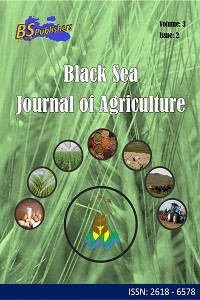Abstract
Project Number
.....
References
- Wubalem Tadesse (Ph.D.)Ethiopian Environment and Forest Research Institute (EEFRI)E-mail: wubalem16@gmail.com or dg@eefri.gov.et or wubalemtw@yahoo.comAddis Ababa, Ethiopia
- Teshome Tesema (Dr)Ethiopian Environment and Forest Research Institute (EEFRI)E-mail: teshome_tesema@yahoo.comAddis Ababa, Ethiopia
Relation Between Regeneration Status of Woody Species and Soil Properties of Gatira George’s Church and Gemeshat Remnant Forests, North Eastern Ethiopia
Abstract
Gatira George’s and Gemeshat forests located in the Habru district North Wollo, Ethiopia are a type of remnant forests, characterized by the presence of many ingenious tree species. The aims of this study were to describe the natural regeneration of two forests in relation to soil properties and investigate if the variation in soil characteristics affects the regeneration status of the forest.For each site,a total of 60 and 9 quadrat, were established along line transects laid across Gemshat forest and Gatira Giorgis forest using stratified random sampling. At each site, one measuring 20 × 20 m plots were established for surveying regeneration of species (seedling < 1m height, sapling at a height between 1-2m and tree > 2m height). Regeneration status of the forests was correlated with chemical and physical soil analyses. The regeneration status of seedling in Gemeshat natural forest is higher in number of individual species ha-1 than Gatira George’s forest, showing in Both forests the regeneration status in the order good> new> fair>poor and no. While, the variation in soil characteristic in Gatira George’s church forest was higher than Gemeshat forest. This is due to Gatira George’s church forest is no occurrence of land slide and soil erosion. Regeneration status of the present study showed significant in moisture content, organic carbon, and organic matter and available phosphorus and soil pH correlation with soil variables implies that consideration of forest soil fertility will improve the natural regeneration of the forests. Our study indicates that the conservation of church forest and natural forest can be effective in restoring native indigenous forests, and with time, both forest types may obtain an important role as source of seeds of indigenous woody species. However, the major natural & anthropogenic activates observed in Gemeshat forest include landslide, erosion, overgrazing, inappropriate land use, illegal cutting of tree for timber and fuel wood collection. Therefore, it needs effective management intervention to sustain goods &services from forests. Tree Species that showed no regeneration in both forests should deserve further investigation measures for appropriate conservation together with the involvement of the government and the local community.
Supporting Institution
Sirinka Agricultural research center
Project Number
.....
Thanks
Thanks to Sirinka Agricultural research center next to God.
References
- Wubalem Tadesse (Ph.D.)Ethiopian Environment and Forest Research Institute (EEFRI)E-mail: wubalem16@gmail.com or dg@eefri.gov.et or wubalemtw@yahoo.comAddis Ababa, Ethiopia
- Teshome Tesema (Dr)Ethiopian Environment and Forest Research Institute (EEFRI)E-mail: teshome_tesema@yahoo.comAddis Ababa, Ethiopia
Details
| Primary Language | English |
|---|---|
| Subjects | Forest Industry Engineering |
| Journal Section | Research Articles |
| Authors | |
| Project Number | ..... |
| Publication Date | April 1, 2020 |
| Submission Date | October 17, 2019 |
| Acceptance Date | January 17, 2020 |
| Published in Issue | Year 2020 Volume: 3 Issue: 2 |


